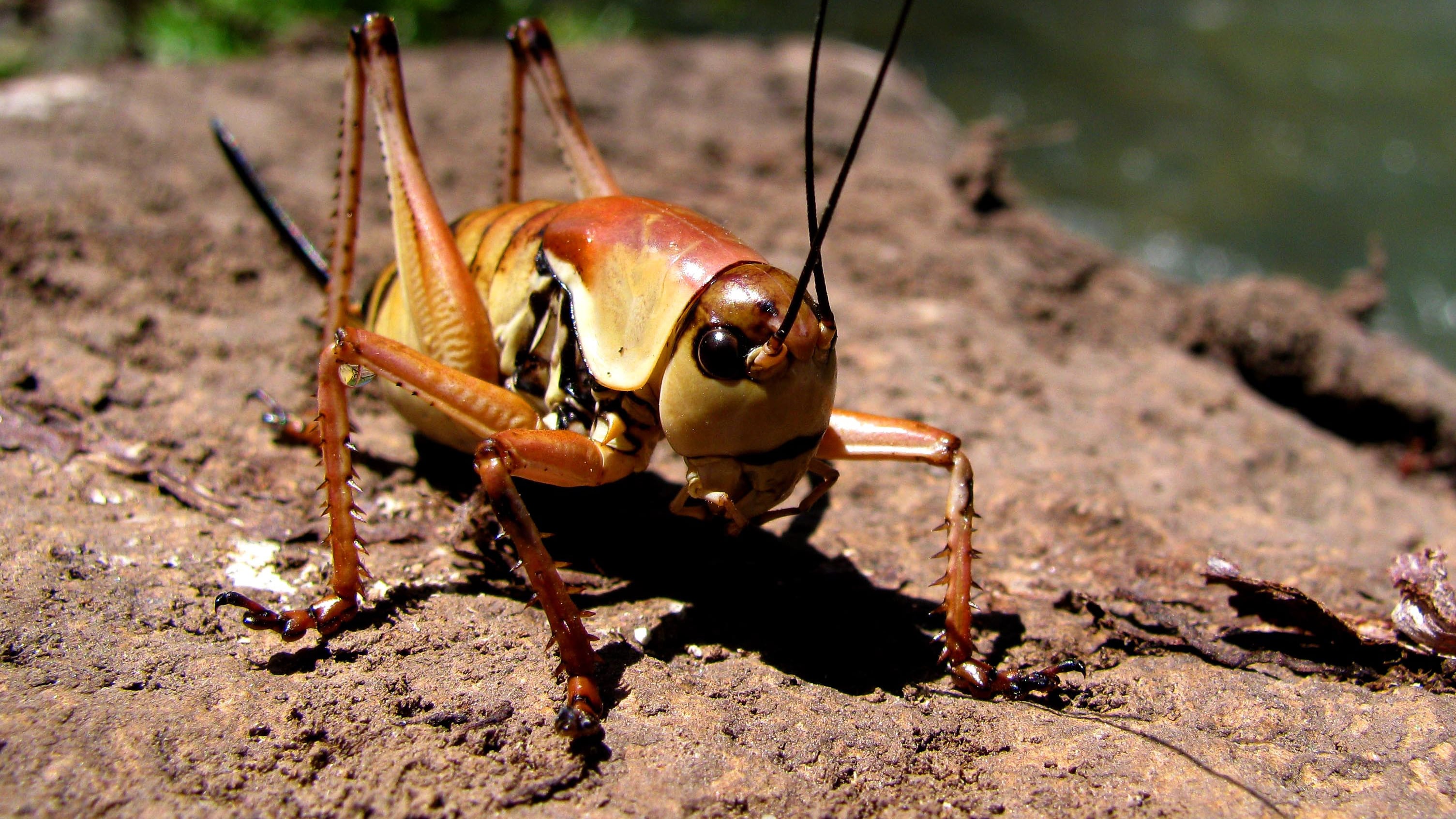Eastern Oregon is apparently under assault by a plague of ravenous Mormon crickets. What’s so Mormon about them? Are they morally upstanding? Abstemious? Polygamous? Please advise. —Ritt Momney
Believe me, Ritt, I’d love to convince you that they’re called Mormon crickets because of their love for gold statues mounted on tall white columns. Unfortunately, there’s really nothing Mormon about them at all (except perhaps their lack of interest in birth control). They got the name after famously attacking Brigham Young’s fledgling Mormon settlement in Utah in 1847.
If Mormon crickets were discovered now, we’d call them Giant Murder Crickets. (They can’t hurt you, but who’s gonna tune in at 11 to hear about Stingless Vegan Crickets?) They’re huge—3 inches long—and each one can eat 38 pounds of vegetation in its 100-day life. They can’t fly (thank God), but they march by the millions, devouring all plant life in their path.
Obviously, this is not what you want to see as the leader of a 19th century religious community, and not just because survival depends on a successful harvest: When your power flows from the perception that you are God’s anointed, having your colony wiped out by a literal plague of locusts is just not a great look.
Indeed, as the cricket was devastating their crops, several of Young’s fellow latter-day saints questioned his judgment, urging him to abandon his plans for Utah and resettle the group in—wait for it—Oregon, which might have changed our state’s colorful history considerably.
But then, just as Casa Diablo was vanishing from our McFly family photo, a massive flock of seagulls miraculously appeared—in Utah!—to devour the crickets, and the outpost that would later become Salt Lake City was saved. This event is now called the “Miracle of the Gulls,” and while it would be stretch to call it Mormon Hanukkah, it’s a well-known legend.
Secular killjoys are not entirely sold on this telling: Scientists note that the swarming crickets (which are actually katydids) have been feasted upon by seagulls in Utah forever; it’s like Burning Man for them. Historians also see no “miracle” mentioned in contemporaneous accounts of that year’s events. But can either explain why there’s a gold statue of a seagull (on top of a tall white column) in Temple Square in Salt Lake City? The defense rests.
Questions? Send them to dr.know@wweek.com.
